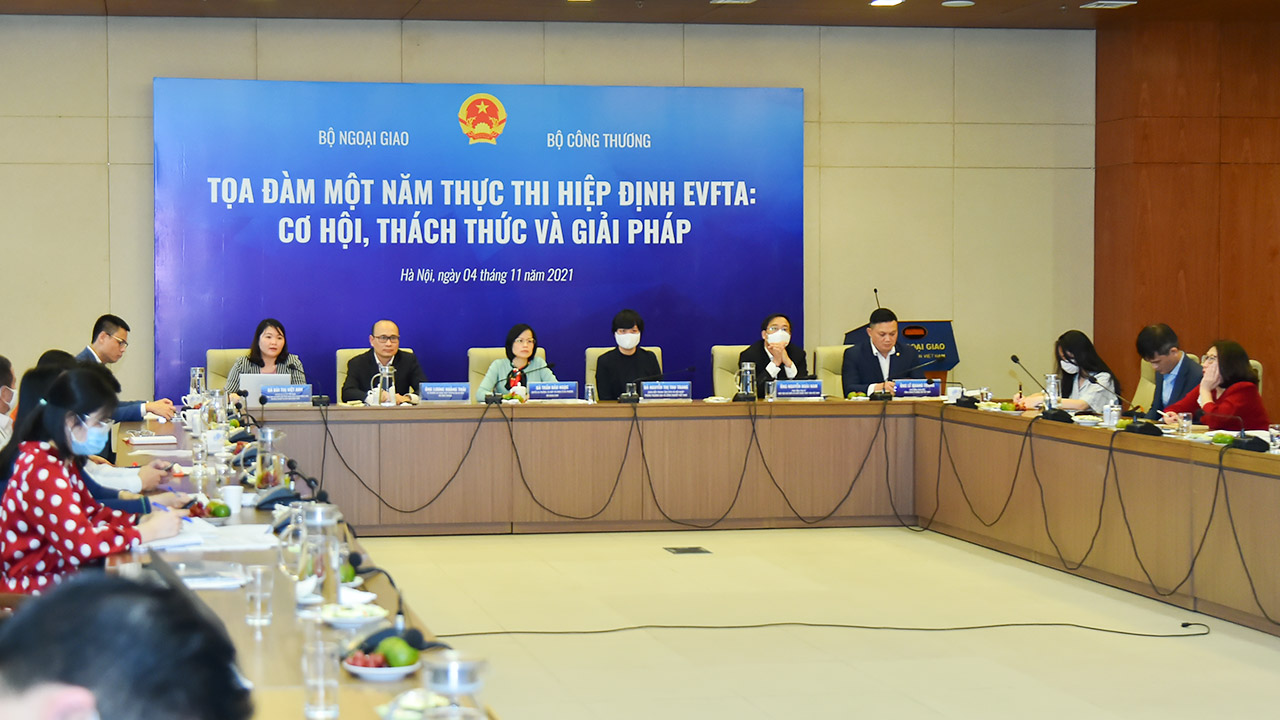Seminar looks on one year of EVFTA implementation
A seminar was held in Hanoi on November 4 in both direct and online formats to discuss opportunities, challenges and solutions for Vietnam after one year of implementing the EU-Vietnam Free Trade Agreement (EVFTA).
Participants noted that after more than one year of implementation, the deal has brought about many positive results.
In the first nine months of this year, trade between Vietnam and the EU reached US$41.29 billion, up 13.4% over the same period last year, including Vietnam’s exports of US$28.85 billion, a year-on-year rise of 11.7%.
Addressing the event, Deputy Foreign Minister Dang Hoang Giang highlighted the importance of the Vietnam-EU comprehensive cooperative partnership, affirming that the implementation of the EVFTA since August 2020 has created a new motivation for the Vietnam-EU collaboration through opening up large cooperation opportunities, contributing to promoting trade and investment activities among the business communities and people of both sides.
According to the Vietnam Chamber of Commerce and Industry (VCCI), compared to other FTAs, the level of understanding and expectation of Vietnamese businesses on the EVFTA is higher, with 30.19% of surveyed firms clearly understanding commitments included in the deal compared to 22.95% on other FTAs.
The EVFTA is one of the trade deals of Vietnam with the highest ratio of efficiency in the first year.

Luong Hoang Thai, Director General of the Multilateral Trade Policy Department under the Ministry of Industry and Trade, said thanks to the EVFTA, trade between Vietnam and the EU has developed in a more sustainable direction. Along with opportunities in expanding and diversifying the market, the deal has brought about chances for Vietnam to reform its institutions, making investment and business environment better and more transparent, and transforming its goods structure towards more high added value goods.
At the seminar, Vietnamese ambassadors and trade councilors in several EU countries provided many useful information on the market and consumers’ habits in those countries.

However, they said that there are not many Vietnamese products that meet the demand of the EU side, while the competitiveness and engagement of Vietnam in the value chains remain modest, and the combination between export and cooperation in technology for production and distribution of goods has been limited.
Participants at the event expressed hope that Vietnamese representative agencies abroad will provide more information on the markets and make more plans to promote the national image, thus strengthening trade promotion activities in Europe in a comprehensive manner.



